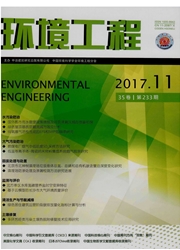

 中文摘要:
中文摘要:
采用酒糟与餐厨垃圾作为混合发酵物料,并接种消化污泥进行厌氧干式发酵,比较接种比例(inoculum to substrate ratios,ISRs)(VS质量比)分别为0.5、0.8、1.0、2.0时的甲烷产率和产量、体系VFA、碱度、游离氨等指标。结果表明:接种比例的提高可有效提高甲烷产生速率,缩短发酵周期,减弱较高浓度VFA引起的抑制作用。当ISRs=1.0时产甲烷效果较好,累计产甲烷率为222.58mL/g,VS去除率达83.4%,继续增加接种比例对发酵效果影响不显著。此外,试验中适宜的VFA/碱度值为0.3~1.2,过大或过小都有可能抑制产甲烷过程。
 英文摘要:
英文摘要:
The method of anaerobic solid-state digestion was used to examine the effects of different ISRs ( inoculum to substrate ratios) on methane production, VFA concentration, alkalinity and free ammonia from distiller's grains and food waste at inoculum to substrate volatile solids ratios of 0. 5, 0.8, 1. 0, and 2.0 with activated sludge as inoeula. The results showed that the increasing 1SRs could effectively boost the production of methane, shorten fermentation period and alleviate inhibition effects caused by high VFA concentration. The highest accumulated methane yield was 222. 58mL/g at ISRs value of 1.0 with 83.4% removal rate of VS. Keeping increasing ISRs has no significant influence on fermentation results. In addition, appropriate VFA/alkalinity value has to be kept at 0. 3 ~ 1.2 in this experiment, otherwise methanogenesis process may be inhibited.
 同期刊论文项目
同期刊论文项目
 同项目期刊论文
同项目期刊论文
 期刊信息
期刊信息
